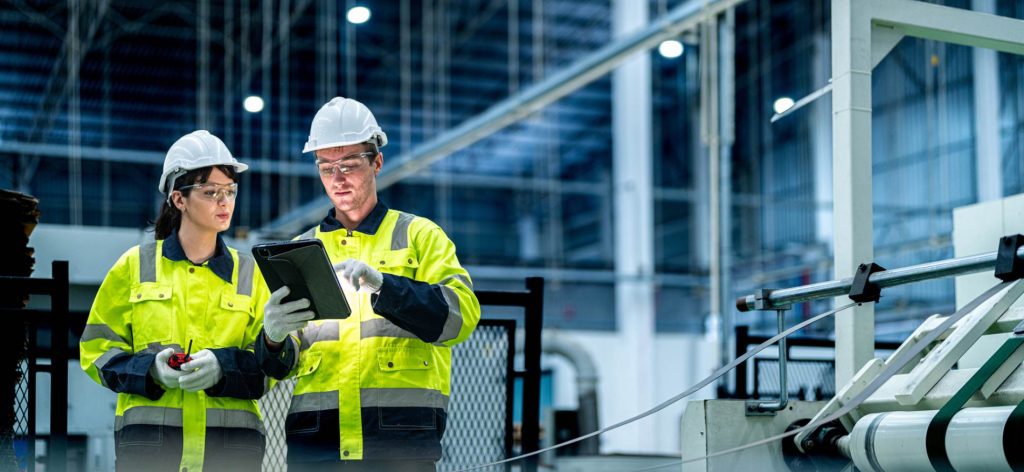Working from home – Compassionate ways to think about those who can’t
Australians who don’t work from home due to the nature of their work are often forgotten about when the topic of remote work arises. When talking about working from home, people generally think about office workers and forget about the other half of the workforce who are required to continue work on-site. According to the…
Australians who don’t work from home due to the nature of their work are often forgotten about when the topic of remote work arises.
When talking about working from home, people generally think about office workers and forget about the other half of the workforce who are required to continue work on-site. According to the most recent Australian Census , professionals, managers and administrative workers made up 48.8% of the Australian workforce.
When the pandemic forced people to work from home, many workers embraced the change and reported multiple benefits such as less commuting stress, a greater work-life balance, quieter space to work and more time to spend with loved ones.
On the other hand, those who couldn’t work from home, such as frontline construction, healthcare, retail and food service workers, were forced to either stand down or continue work on-site where they risked becoming in contact with the virus.
Even after the pandemic has died down, many of those who can work remotely have opted to work from home at least part of the week and continue to reap the benefits.
What are the consequences?
The work from home model poses a question about fairness. While those who work from home get the benefits and flexibility that come with it, the rest of the workforce continue to work on-site and miss out on the same benefits.
During the pandemic, exposure to the virus was the obvious risk of those who were required to work on-site. Onsite workers risked both theirs and the health of their families to continue making a living.
A study published in 2018 found that the performance of construction workers’ projects were majorly affected by their workplace conditions. In 2020, a study was conducted to assess the impacts of COVID-19 on the performance of construction workers. It was concluded that construction workers were less likely to be willing to work during the pandemic when levels of risk associated with their work were unclear.
Pandemic aside, there are a variety of downsides to working on-site. A major factor of poor employee wellbeing is long commute times. According to a report by the Australian Institute, Australians spent an average of 3 hours and 37 minutes travelling to work per week.
Long commutes can negatively impact an employee’s health and mental wellbeing. Long commutes increase stress and are linked to high blood pressure, reduced performance at work and can make employees tired, irritable and angry. The wider effects of long commutes can be detrimental to relationships with families and colleagues.
What could businesses be doing?
While it’s not possible for the entire workforce to work from home, there are solutions that businesses could offer to improve the well-being of their workers who continue to work on-premise.
Businesses should be clear about safety procedures and measures they’re taking to ensure the safety of their employees against COVID-19. Safety measures should be explained to employees, where their work is directly affected, to reassure they feel safe about coming on-site to work. Managing perceptions about the safety of the workplace will reduce employees’ unwillingness to work and thus reduce chances of absenteeism and negative attitudes towards work.
Working on-site comes with disadvantages that affect on-site workers more than remote workers. Disadvantages include reduced time due to commutes and expenses such as work uniform, commuting fees and, in some cases, extra costs for childcare. It’s unrealistic to reduce all work expenses and minimise associated disadvantages but it is possible to influence the attitude towards them.
Employers should encourage workers to practice healthy work habits , such as staying hydrated, taking small breaks, and having an organised workspace. For employees who have long commutes to work, businesses should recommend ways to use the commute time productively. Simple activities such as reading, listening to music or a podcast and even meditation can be useful ways to reduce stress associated with long commutes.
If the nature of work allows it, employers should allow their employees flexible work hours. A study published in the Journal of Business and Psychology found that workers with flexible start and finish times experienced less stress when commuting to and from work.
Where possible, businesses could offer to cover some expenses for their employee’s uniforms and parking fees if not already doing so. Offering to cover costs can help to level the playing field where onsite workers are at a loss as compared to remote workers.
Whether it be employees who work from home or on-site, the wellness of employees should be considered to reduce the likeliness of absenteeism, reduced productivity and negative attitudes towards work caused by work-related stressors.
If you’re looking for talent management advice, check out our blog for more tips to keep your workforce in the best shape.







